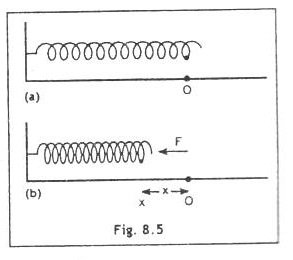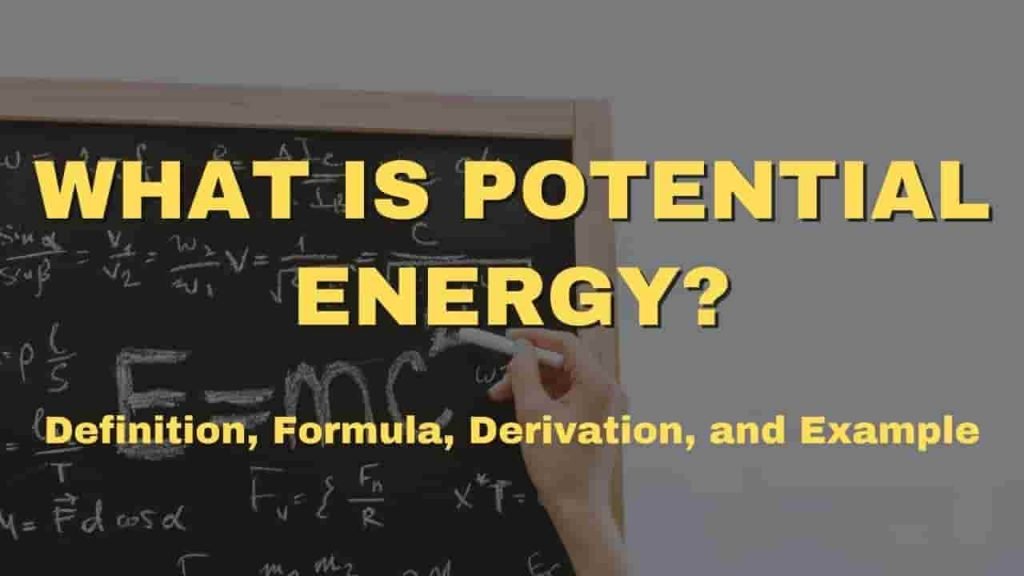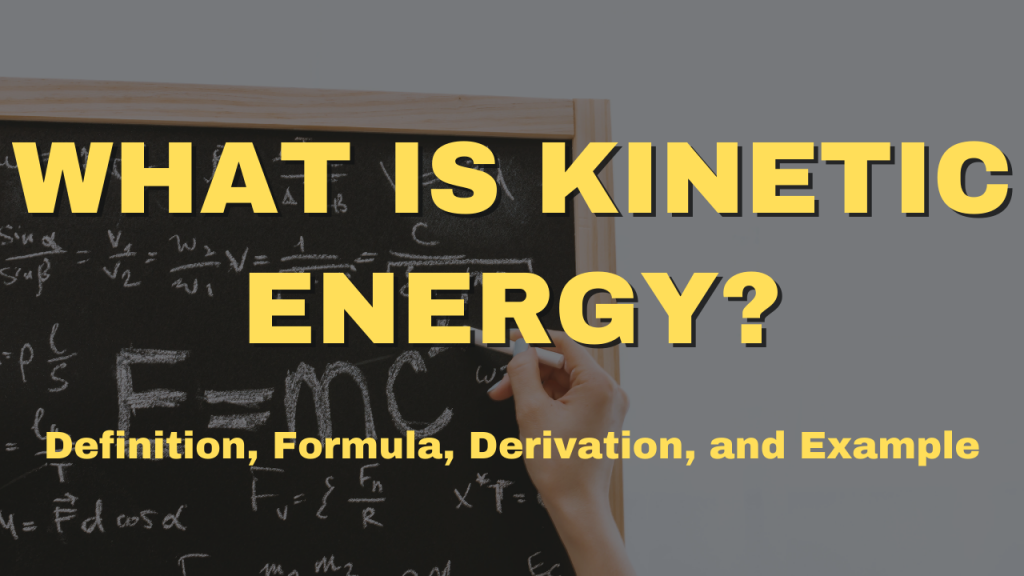What is Potential Energy?
Definition: When a body is capable of doing work by virtue of it’s position, or special configuration the energy is called potential energy.
Potential Energy Formula:
P.E = mgh
Where m stands for mass in kilogram, g is the acceleration due to gravity (9.8 m/s²) and h is the height in meters.
Types of Potential Energy:
There are different kinds of potential energy such as:
1. Gravitational P.E:
The energy associated with a mass when lifted to a height in the earths gravitational field is called gravitational potential energy.
Or
The potential energy possessed by a body in the gravitational fields called the gravitational P.E.
If a body is lifted up to a position higher than its initial position in the gravitational field of earth, work is done on it. This work is stored in the body as potential energy. Such potential energy is called gravitational potential energy (RE).
Consider a body of mass ‘m’ on the ground. If it is lifted up with constant speed through a vertical height “h”, the force required to raise the body is just equal and opposite to its weight W=mg. Thus work done on it against gravitational field is store in it as gravitional work = mgh
Potential energy (P.E)
PEg = W.h or PEg=mgh

2. Elastic Potential Energy:
The energy stored in a stretched or compressed elastic material such as a spring is called elastic potential energy.
If a spring is wound, work is done in winding it against the elastic force of spring. This work is stored in the spring as potential energy. This type of potential energy is due to the constrained position of the spring and is called elastic potential energy.
To find the energy stored in a compressed spring, we calculate the work required to compress it. In figure a force ‘F’ pushes a spring to compress it from its equilibrium position ‘0’ to some other position x, this force is directly proportional to the amount of the compression.
F α x or F = Kx —————– (i)
Where ‘K’ is force constant (spring constant) its value depends on how stiff the spring is. Since the compression force is zero at ‘0’ and Kr at x, the average force needed to compress the spring from position 0 to x is
Fav = O + Kx ÷ 2 = Kx ÷ 2 = 1 ÷ 2 Kx
Therefore work done in compressing the spring is W = Favx
or W = 1 ÷ 2 Kx x x = 1 ÷ 2 Kx2
This work causes the elastic potential energy, therefore
Elastic Potential Energy = 1 ÷ 2 Kx2

Potential Energy Problem or Questions
Example 1
A box has a mass of 5.8kg. The box is lifted from the garage floor and placed on a shelf. If the box gains 145J of Potential Energy (Ep), how high is the shelf?
Solution:
Potential Energy= Ep=mgh
Rearrange equation to find height
h = Ep /mg = 145 / 5.8×10
= 145 /58
= 2.5
The shelf is 2.5m high
Example 2
A 1,500-gram object at 20 meters above the ground, free fall to the ground. What is the gravitational potential energy of the object? Acceleration due to gravity is 10 m/s2.
Data:
Acceleration due to gravity (g) = 10 m/s2
Mass (m) = 1500 gram = 1500/1000 kilogram = 1.5 kilogram
Height (h) = 20 meters
Solution:
PE = m g h = (1.5 kg)(10 m/s2)(20 m) = 300 kg m2/s2 = 300 Joule
PEg=mgh
For other physics formulas, definitions and problems click here and if you are looking for full forms of different acronyms and words then check out this list you really gonna find this helpful. We also have an Essay on every topic, Check the complete list here. If you are Studying in Matric Free Video Lectures of Maths, Physics and English are here, and we have got you covered for I.COM Business Maths also.



